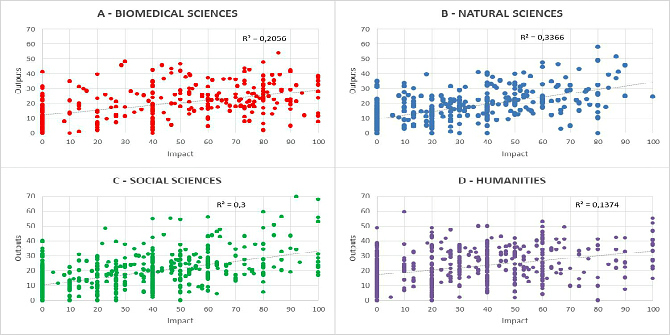 Researchers are increasingly encouraged to “co-produce” or “co-create” their research, particularly if it is to have that much-prized impact. But what exactly does this really mean? Bev J. Holmes defines co-production as the collaboration between researchers and others with a stake in a project in its governance, priority-setting, conducting of research, and knowledge translation. Once what is meant by co-production is clearly outlined, it is equally important to address the many challenges of optimising participants’ contributions, and also to commit to learning throughout the process of co-producing research.
Researchers are increasingly encouraged to “co-produce” or “co-create” their research, particularly if it is to have that much-prized impact. But what exactly does this really mean? Bev J. Holmes defines co-production as the collaboration between researchers and others with a stake in a project in its governance, priority-setting, conducting of research, and knowledge translation. Once what is meant by co-production is clearly outlined, it is equally important to address the many challenges of optimising participants’ contributions, and also to commit to learning throughout the process of co-producing research.
The co-production or co-creation of research is not new. Action-based research traditions can lay claim to a long history, but are those of us involved in co-production doing enough to understand what it means?
In their work on public involvement, Antoine Boivin et al (2014) note there is such widespread support for the rhetoric of co-production that we may dismiss (and I would add, not even acknowledge) the tensions that arise when professionals and lay people work together. Co-production in health research is similar. We need to work harder to say what we mean, mean what we say, and learn as we go.
Say what we mean
Co-production is easy enough to say, but what does it actually mean? I don’t often hear it defined, perhaps because it sounds obvious. When pushed, people may describe it as partnership or collaboration. At a workshop at the 2017 Global Implementation Conference, we defined co-production as collaboration in governance, priority-setting, conducting research and/or knowledge translation. In turn, we defined collaboration according to the International Association of Public Participation’s public participation spectrum. We noted that co-production involves researchers and others with a stake in the project: citizens, patients, health care providers, and/or health care decision and policymakers.
The important piece in all of the above is shared decision-making. But operationalising the “co” in co-production – a prefix implying joint, mutual, in common – is not an easy task. Is co-production the appropriate model for the project at hand? It isn’t always; the other elements on the spectrum (informing, consulting, involving, empowering) are just as valid, depending on the situation. But they mean different things. The message here is that definitions – or lack thereof – have significant implications for action, discussed next.
Mean what we say
Committing to co-creation – and all it implies with regard to shared decision-making – means acknowledging that co-production is challenging: it requires role clarity, attention to power imbalances, difficult discussions about research rigour versus research relevance, and constant monitoring (Holmes et al, 2016). It also means putting in place the mechanisms to support it.
Boivin and colleagues note three areas for attention:
- Credibility – participants need to learn each other’s language and be seen as valued and relevant sources of knowledge for each other.
- Legitimacy – participants need to be clear on whose behalf they speak (e.g. people in the same profession, users of a particular service, patients with the same condition, employees in a specific organisation) and be supported to do so.
- Power – all participants must be able to influence decisions.
Practical steps can be taken in all these areas. For example credibility comes from participants’ experience and expertise, but can be built through access to additional information or skill-building. For legitimacy, Boivin and colleagues point out the difference between statistical representativeness of a group (correspondence between the descriptive characteristics of a sample and those of the population from which they are drawn) and representation. The former is difficult and expensive; the latter, where individuals speak for a wider constituency, is feasible through appropriate connections, for example access to community groups or related data. To achieve a balance of power, facilitation can be critical, helping with seemingly simple strategies like seating plans and titles, as well as ground rules and agenda-setting.
Learn as we go
We need to study co-production as a topic, over and above the focus of the research in which it is used. Ideally, those involved in co-productive research will:
- Draw on the plentiful, useful but largely dispersed literature that can provide evidence for what works where.
- Use an existing framework and model.
- Commit to the study of their initiative – for example testing the adopted framework – for the benefit of the field. Rather than more lists of barriers and facilitators, we need studies of co-production in action.
Conclusion
Of course, co-produced research will ultimately only be as successful as the broader system enables it to be. Funders and health care and academic organisations also have a role to play (see my blog post with Allan Best, “Six actions to mobilise knowledge in complex systems“).
What has your experience been with research co-production? Can you point to useful theories, models, frameworks and methods?
This blog post originally appeared under a different title on the Integration and Implementation Insights blog and is based on a longer version published on the Michael Smith Foundation for Health Research website. It is reposted here with permission.
Featured image credit: Research team by the Institute for Government (licensed under a CC BY 2.0 license).
Note: This article gives the views of the author, and not the position of the LSE Impact Blog, nor of the London School of Economics. Please review our comments policy if you have any concerns on posting a comment below.
About the author
Bev Holmes is Interim President and Chief Executive Officer of the Michael Smith Foundation for Health Research, a research funding agency in British Columbia, Canada. She holds adjunct professor appointments at Simon Fraser University and the University of British Columbia. Her research interests include knowledge translation, discourse analysis, health communication, risk communication, and public involvement in health research.








This is useful. The other element of co-production that we often discount, is that it takes time. Reaching common conclusions with different players who may hold different values and different life experiences is not an easy or quick process. This is challenging for funding cycles to manage and often results in short cuts that undermine co-production.